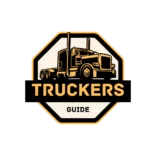Introduction
When it comes to material handling, forklifts are a staple in warehouses, construction sites, and shipping yards. One of the most frequently asked questions is: how much does a forklift weigh? The answer isn’t as straightforward as you might think—it depends on the type, capacity, and purpose of the machine.
In this guide, we’ll break down forklift weights by type, explain why it matters, and help you make informed decisions for your operations.
Why Forklift Weight Matters
The weight of a forklift plays a crucial role in:
- Stability and safety – Heavier forklifts provide better counterbalance when lifting heavy loads.
- Transport and logistics – You’ll need the right trailer or container to move a forklift safely.
- Floor load capacity – Especially important in indoor operations or mezzanines.
- Compliance with workplace safety standards – Knowing the exact weight ensures you meet regulations.
Typical Forklift Weights by Type
Here’s a breakdown of average forklift weights by category:
1. Electric Forklifts (Indoor Use)
- Weight: 3,000 – 6,000 lbs (1,360 – 2,720 kg)
- These are compact and quiet, often used in warehouses.
- Common models: Toyota 3-Wheel Electric, Hyster J40XN
2. Internal Combustion Forklifts (IC Forklifts)
- Weight: 7,000 – 12,000 lbs (3,175 – 5,443 kg)
- Typically powered by diesel, propane, or gasoline.
- Great for both indoor and outdoor use.
3. Rough Terrain Forklifts
- Weight: 10,000 – 20,000+ lbs (4,535 – 9,072+ kg)
- Designed for outdoor construction sites and uneven surfaces.
- Features: Big tires, high ground clearance.
4. Heavy-Duty Forklifts
- Weight: 30,000 – 100,000+ lbs (13,600 – 45,000+ kg)
- Used at ports, steel plants, or large industrial operations.
- Example: Kalmar or Taylor large-capacity forklifts.
How to Find the Exact Weight of a Forklift
You can find a forklift’s weight in a few ways:
- Manufacturer’s data plate (on the body of the forklift)
- Owner’s manual
- Manufacturer website or model specification sheets
Look for the “service weight” or “overall weight,” which includes the forklift’s frame, battery (if electric), and counterweight.
Pro Tip: Forklift Weight vs. Load Capacity
Don’t confuse a forklift’s own weight with its lifting capacity.
Example: A forklift that lifts 5,000 lbs might weigh 9,000 lbs or more, because it needs to counterbalance what it lifts.
Final Thoughts
Understanding how much a forklift weighs isn’t just trivia—it’s essential for planning, safety, and logistics. Whether you’re buying, renting, or transporting a forklift, knowing the weight helps ensure smoother operations.


